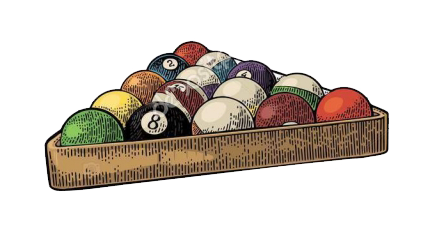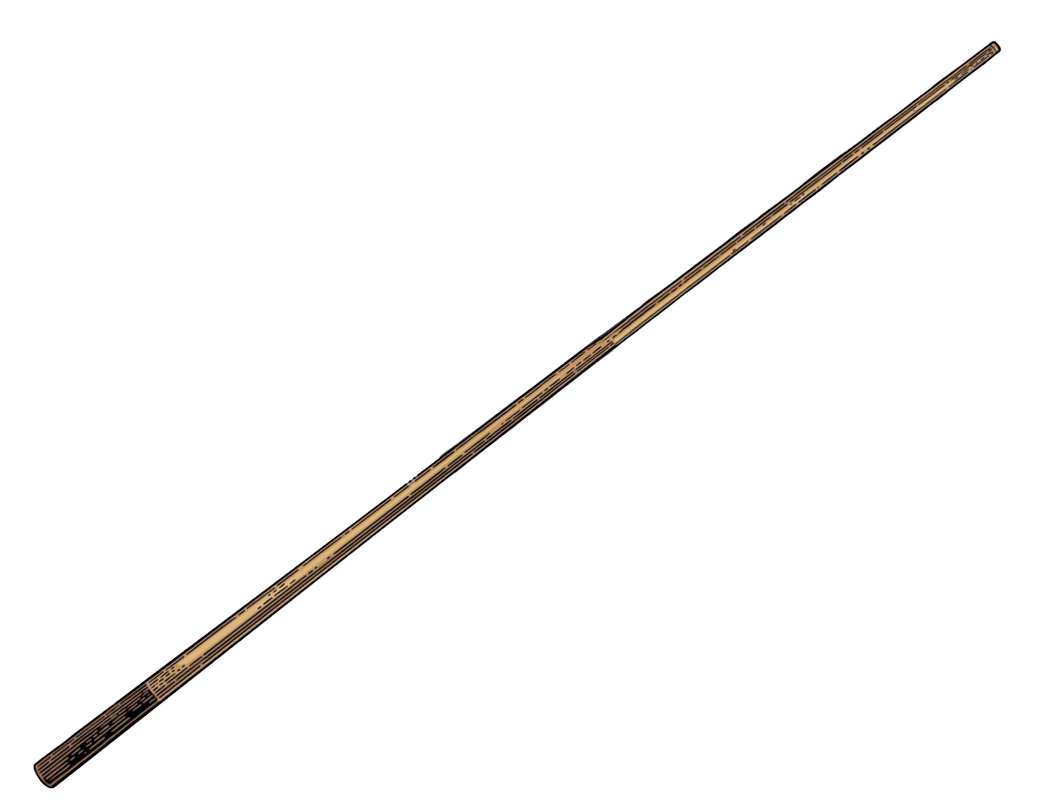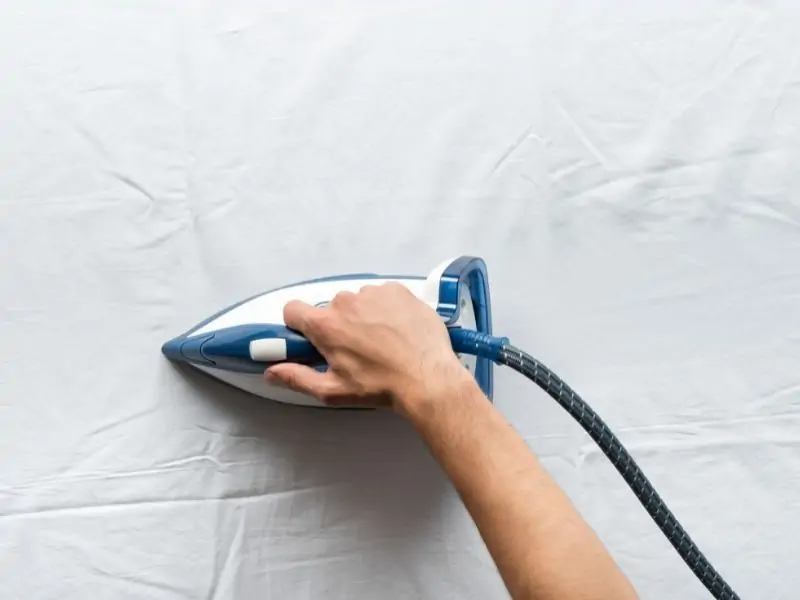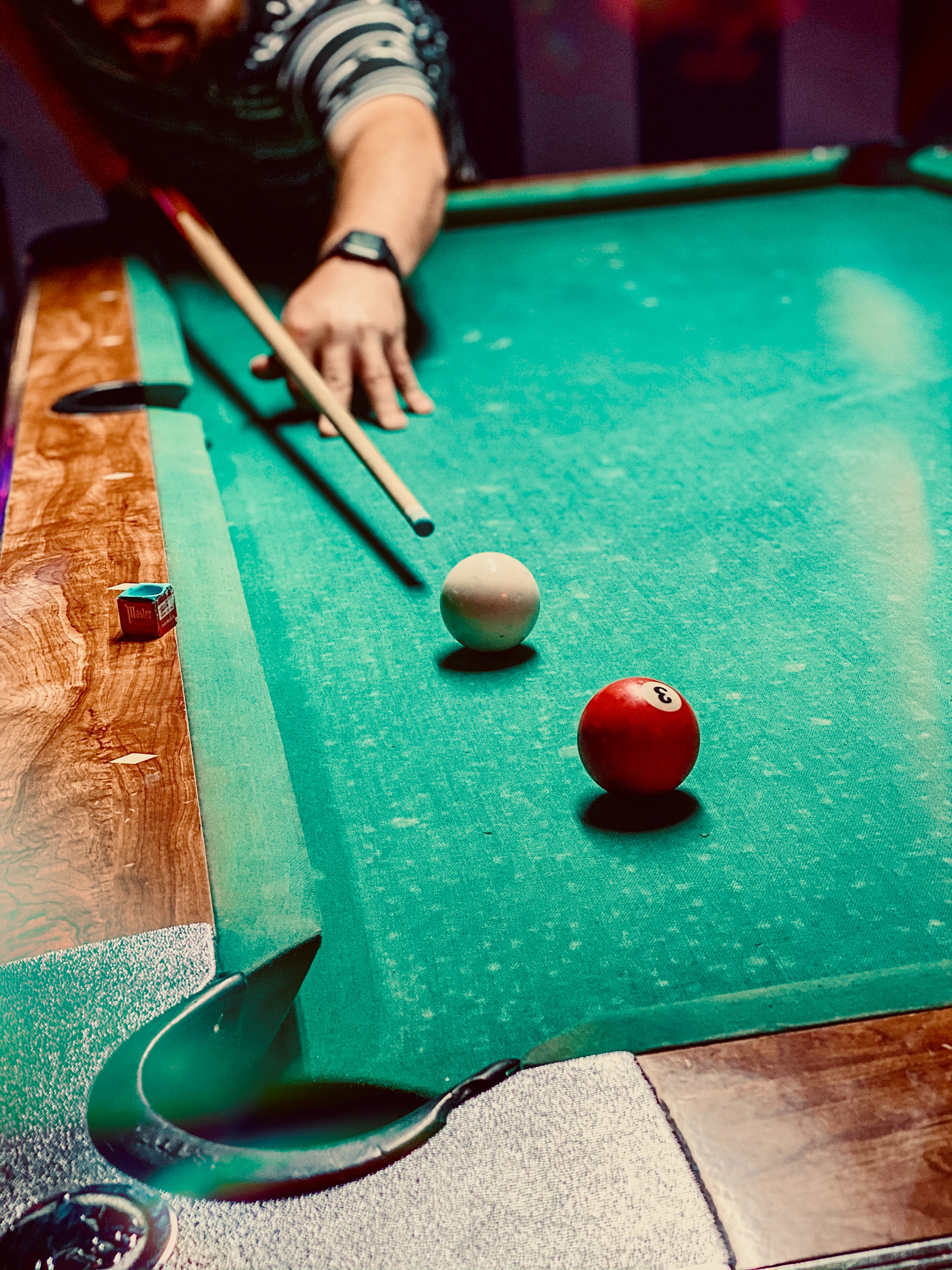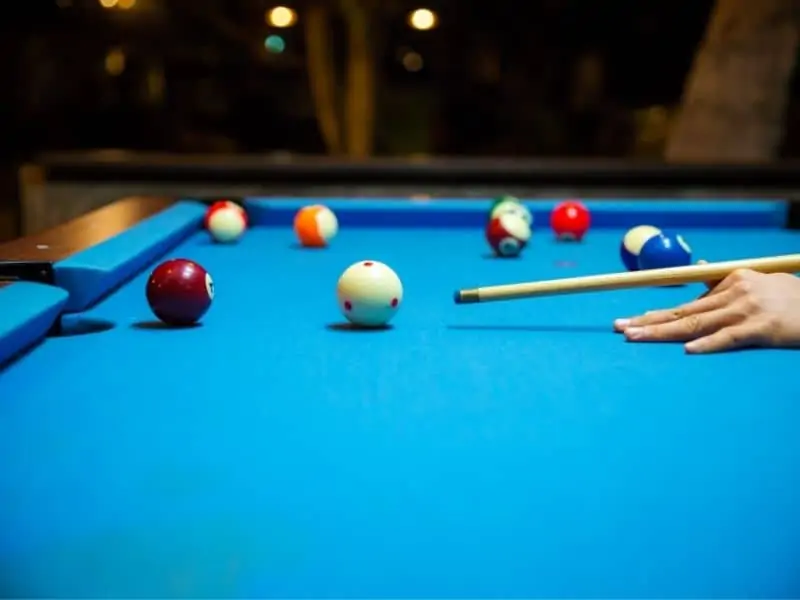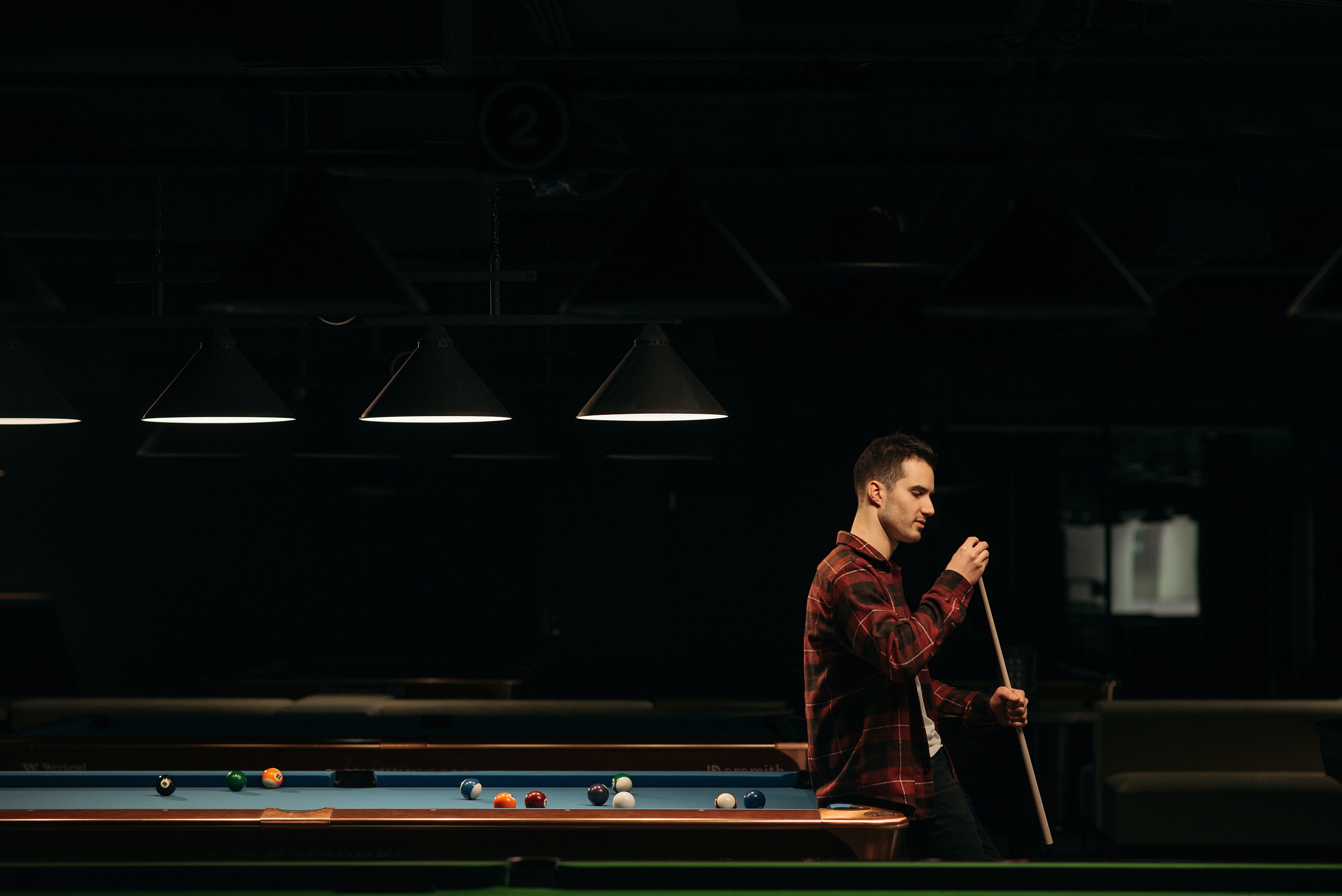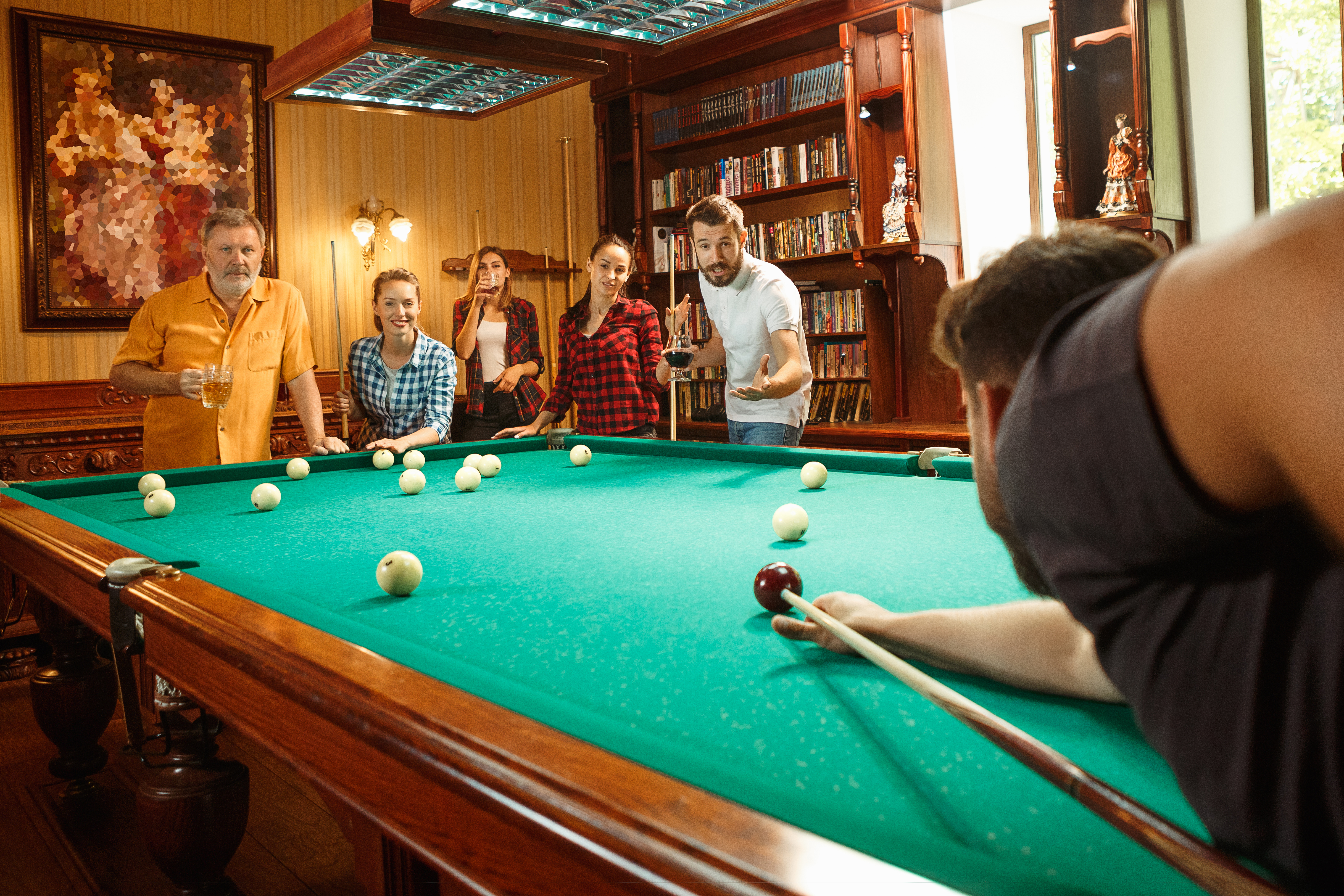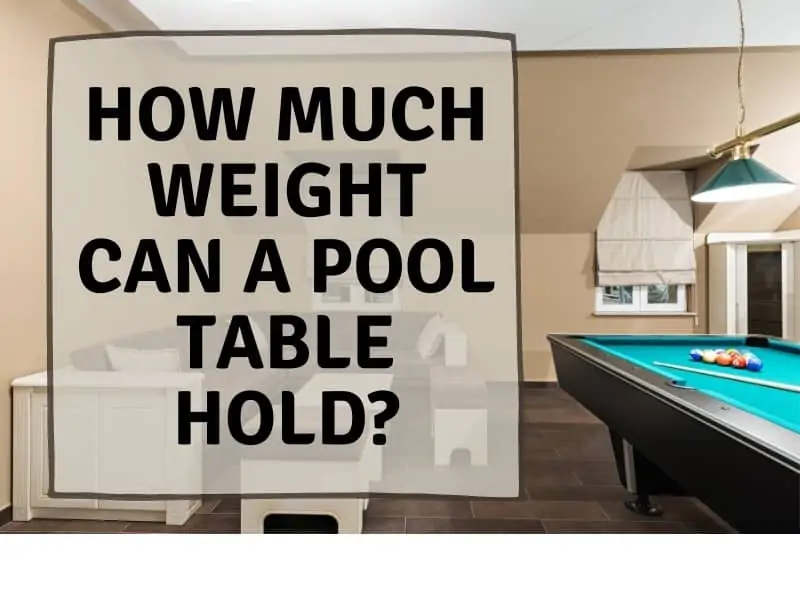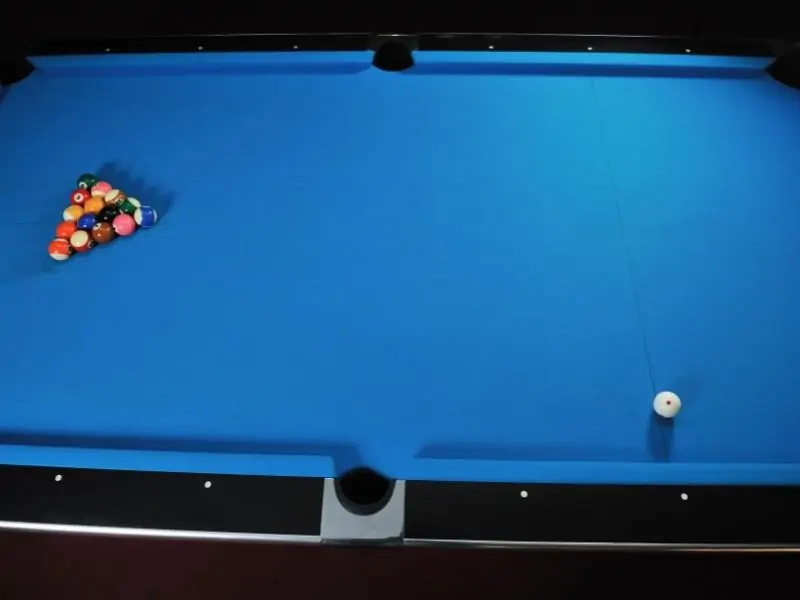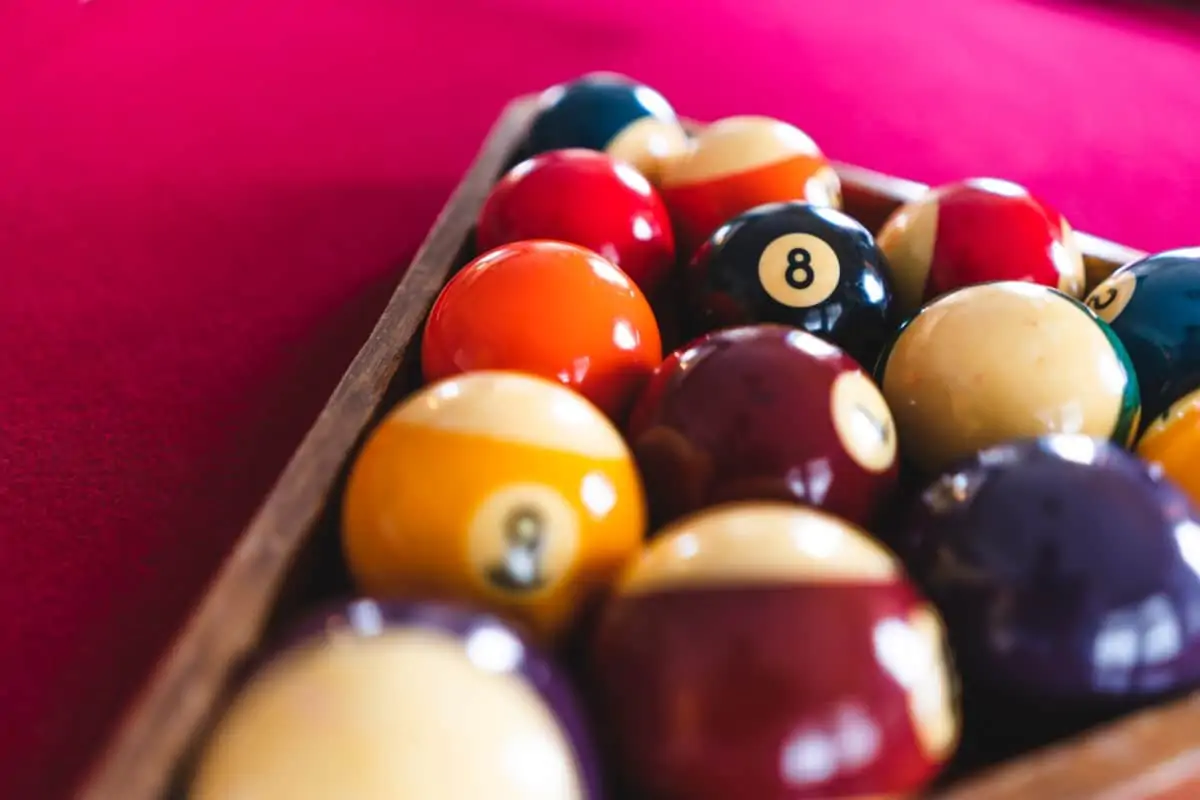Of all the pool table components, nothing wears down faster or requires more maintenance than the felt. After all, it’s fairly fragile, and even minor damage can throw off the dynamics of the table. If the felt isn’t completely flat and smooth, the playing surface will be inconsistent and the speed and direction of the balls will be affected. That’s why I’m often asked the question, “can you iron pool table felt?”
You can iron pool table felt - but doing so will not solve the problem of wrinkles in the playing surface, and doing it improperly can severely damage the felt. Special pool table irons are used on some types of felt as part of routine maintenance, but it’s not appropriate on other types. When ironing pool table felt, strict protocols must be followed to avoid damage.
Why Iron a Pool Table?
Firstly, let’s look at why you might want to iron your pool table. There seems to be a widespread misconception about what ironing a pool table is meant to accomplish. Many people think it’s a way to get rid of wrinkles or creases in their pool table felt, but this is not the case. It’s actually meant to improve the speed and performance of certain types of felt.
But before we get into that, let’s debunk the wrinkle myth. We’ll start by examining what causes wrinkles in the first place.
What Causes Pool Table Felt To Get Wrinkled?
Pool table felt can become wrinkled for two main reasons - humidity and improper installation. Both of these can cause the felt to become loose, which allows the fabric to bunch up or become pinched by any pressure exerted by the players’ hands or the balls themselves.
Humidity
Excess moisture causes the cloth material to “relax” or loosen, causing the slack to bunch or wrinkle when pressure is applied. This can occur from both spills and humidity, so it’s crucial to keep drinks off the table and keep the table in a climate-controlled environment.
Improper Installation
Pool table felt is either glued to the edges of the slate bed or stapled to a wooden backing underneath the slate (or a combination of both/). Installing it correctly involves a complicated and intensive process. A cloth that hasn’t been stretched and anchored properly on installation will be loose from the start and only get worse over time.
How Do You Get Wrinkles Out of Pool Table Felt?
The only reliable way to get wrinkles out of pool table felt is to have the felt re-stretched. Wrinkles only form when the felt is loose, so re-tightening it is the only long-term solution. Other remedies may work in the short term but only treat the symptom, not the cause.
If the wrinkles are the result of looseness due to humidity, using a dehumidifier may help the felt tighten up again, but not in every case. Ironing the felt will only remove wrinkles temporarily and won’t make the felt any tighter.
Why Ironing Isn’t the Solution To Wrinkles
Before Installation
When you buy pool table felt, it’s typically folded up into a neat square. If it’s been in storage for a while or has been compressed under weight, it will likely have sharp creases running through it, making it look like a checkerboard when it’s laid out. Many people are tempted to iron out these creases before the felt is installed. This is a mistake - not only will it potentially damage the felt, but it’s also unnecessary since the creases will flatten when the felt is stretched over the playing surface.
After Installation
If the felt is stretched and installed properly, there should be no wrinkles whatsoever in the playing surface. If there are, ironing them may work temporarily but it won’t address the root cause, and the wrinkles will only come back in a short time.
Now that we know why ironing won’t do much good against wrinkles, let’s look at what it is good for. To do so, we first need to understand a little bit about the different types of pool table cloth.
Worsted Cloth & Woolen Cloth
The first thing to understand is that pool table felt isn’t actually felt - at least not the kind you’ll find in your average craft store. Pool table cloth is typically made from wool or a blend of wool and either nylon or polyester.
Now, there are two main types of pool table cloth - worsted and woolen.
Worsted Cloth
Worsted cloth, sometimes referred to as American cloth, is spun and woven to give it a smooth texture with no fuzzy threads or nap sticking up. Since it is smooth and non-directional, worsted cloth allows balls to roll faster and longer over the playing surface (which is why it’s also often called speed cloth). For this reason, worsted cloth is considered the best and is the only cloth used in professional tournaments. It is usually found on tables 8’ or larger or on high-end tables — though some smaller coin-op tables do have it.
Because it is uniformly smooth and has no directional fibers, there’s never any reason to iron worsted cloth - especially if you have the more expensive top-of-the-line Simonis brand cloth.
Woolen Cloth
Woolen cloth - often referred to as English cloth - is typically found on English-style pool tables, snooker tables, and many of the smaller or less expensive American tables in both homes and commercial settings. It has the more velvety, fuzzy texture that most of us imagine when we think of felt.
The directional nap makes for a somewhat slower roll, which is customary in English-style pool (aka blackball) and, more importantly, snooker. The game of snooker has a slower and more deliberate pace than American pool and ball speed and finesse (partially determined by the texture of the cloth/) are key aspects of the game. And this brings us to the only purpose served by ironing pool table cloth.
After plenty of play, the nap on woolen cloth tends to get a little messy and chaotic, slowing balls down too much and creating inconsistencies in the playing surface. So, to smooth out the nap and “speed up” the cloth, a special pool table iron is drawn carefully along the playing surface in the direction of the nap. This is common practice with snooker tables and is done after every few cleanings.
If you don’t have a pool table iron and don’t want to invest in one, you can do this with a regular iron, but if you don’t want to damage your felt, you’ll need to follow a few protocols.
How To Iron Pool Table Felt (The Right Way)
When setting out to iron your pool table felt (regardless of the iron you’re using), there are a few key factors that will make the difference between success and failure - cleanliness, temperature, moisture, speed, and direction.
- Only iron after cleaning the table thoroughly. - Ironing a dirty or dusty pool table will heat any debris stuck in the cloth, which can cause the material to harden and wear out faster. Always clean your table before ironing. Also, make sure your iron is completely clean - any stains on the metal may transfer to the cloth.
- Use a low temperature setting. - If you’re using a regular iron, start with the lowest setting (usually the ‘wool’ setting), and test it by ironing a piece of paper. If the iron burns the paper, you can be sure it will burn the cloth.
- Dry-iron only - don’t use any water whatsoever. - Any steam or spray from a household iron can wear down or damage the cloth, so always use a totally dry iron. In fact, it’s best to use a simple dedicated iron that’s never been filled with water, rather than the iron you use for clothing - even a little leftover moisture can be bad.
- Go slowly, but not too slowly. - Ironing too fast, aside from being ineffective, runs the risk of tearing the felt or gouging a cushion. But going too slowly or holding the iron in one place too long will scorch the cloth.
- Always iron with the direction of the nap. - The whole point of ironing pool table felt is to smooth down the nap and restore it to its original direction - going against the nap, side to side, or in circles will only make the cloth even more chaotic and inconsistent. Before ironing (and after cleaning), always “block” or “nap” the cloth - feel with your hand which direction the nap runs, then smooth the nap in that direction using a piece of cloth attached to the back of your brush.
Those are the basic guidelines for ironing a pool table. Here’s a helpful video to give you a clear sense of how it’s done in practice.
In Summary
Ironing pool table felt is only to be done to smooth out the nap on tables with woolen cloth, but it’s not necessary on tables with worsted cloth. Contrary to popular belief, ironing won’t help with wrinkles in your pool table cloth. If you are going to iron your table, it’s best to use an iron specifically designed for that purpose (if you can find one - they’re admittedly a little hard to find), but a household iron will work if you’re very careful. Ironing should only be done about once a month or after every few cleanings, depending on how often you play.
Other Articles You May Be Interested In:
- Best Pool Cues for the Money: Discover the top pool cues that offer great value without breaking the bank.
- Pool Table in the Garage? Here’s What You Need to Know: Understand the essential considerations for setting up a pool table in your garage.
- Break Cue vs Playing Cue: What’s the Difference?: Learn the key differences between break cues and playing cues to enhance your game.
- How Much Does a Good Pool Cue Cost?: Explore the factors that determine the cost of a high-quality pool cue.
- Are Mini Pool Tables Worth It? A Complete Guide: Read our comprehensive guide on mini pool tables and decide if they’re the right fit for you.
